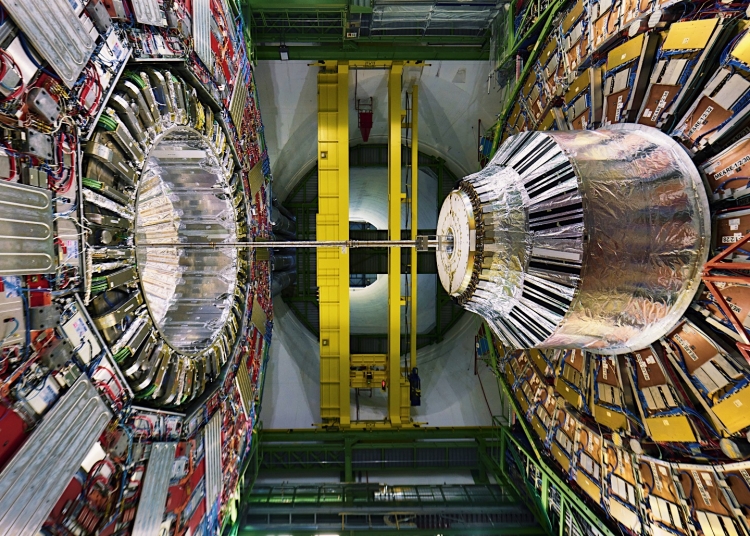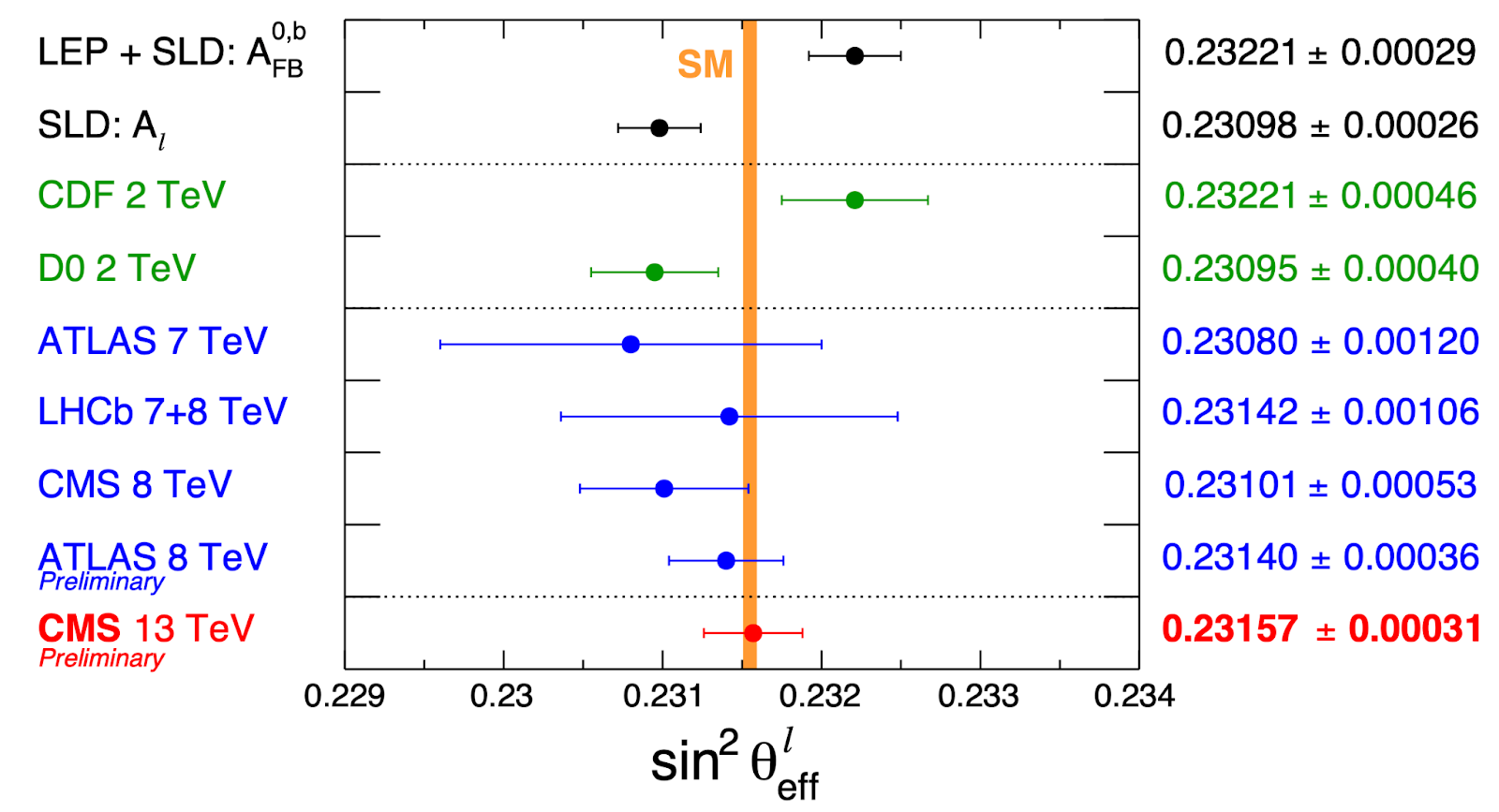
A fundamental parameter of the Standard Model, the electroweak mixing angle plays a key role in the “Higgs mechanism”, when the W and Z gauge bosons get their masses through electroweak symmetry breaking. CMS has now reported a new measurement of this parameter, with the best ever precision reached at a hadron collider.
In the 1980’s, the CERN tunnel currently hosting the Large Hadron Collider (LHC) was built to host the Large Electron Positron (LEP) collider, which tested the Standard Model of particle physics (SM) with high-precision measurements of the properties of Z bosons. Through those measurements, collectively known as electroweak precision observables (EWPOs), LEP established its ultimate legacy to particle physics and a cornerstone of the experimental verification of the SM.
Taking advantage of very large data samples and of decade-long efforts in understanding the functioning of the detector down to its tiniest details, the CMS collaborators managed to improve over LEP’s precision on some EWPOs. The latest result, just released, is a high-precision determination of the electroweak mixing angle, θW, which determines the relative strength of the weak and electromagnetic forces, and how they emerge from the “Higgs mechanism” that gives masses to fundamental particles. Similarly to what was previously done at LEP, this measurement relies on events where a Z boson is produced and then decays to a pair of leptons (either electrons or muons). Figure 1 shows one such event, for illustration.

Figure 1: Event with a Z boson decaying into a pair of muons (red lines).
The analysis starts by selecting a suitable fraction of the events collected by CMS during the LHC “Run 2”, from 2016 to 2018, when the energy of the proton-proton collisions was 13 TeV. Then it counts the number of times that the muon or electron with negative charge goes forward or backward with respect to the dilepton direction. The so-called forward-backward asymmetry (the difference divided by the sum) is then used to derive the “effective” electroweak mixing angle (θeff, directly related to θW) is obtained. “One of the main difficulties of making this measurement at a hadron collider is that the protons are composed of quarks and gluons, with energy distributions that are only known to a certain accuracy”, says Aleko Khukhunaishvili, a postdoctoral researcher at the University of Rochester who worked in the analysis. The new result profits from novel detection techniques and from an analysis strategy that minimizes the uncertainties reflecting our knowledge of the internal composition of the colliding protons.
The final result, represented in the form of the sin2θeff observable, is shown in Fig. 2, together with previous measurements and with the SM prediction. The new CMS measurement has a precision comparable to that of the LEP experiments and agrees very well with the SM prediction.

Figure 2: The new CMS measurement of sin2θeff (red marker and legends), compared with previous results and with the SM prediction (vertical orange band).
Traditionally, hadron colliders like the LHC are considered “discovery machines”, as opposed to “precision machines”. Given the higher energies reached with proton beams than with electron beams, hadron colliders are the ultimate instruments to probe the high-energy frontier of our understanding of the microscopic world. The downside is that they provide very crowded collisions, with the particles produced by the interesting processes swamped by many other “background particles”, simultaneously produced by the other quarks and gluons of the colliding hadrons. This is why particle physicists tend to prefer electron-positron colliders to perform precision studies: only a small number of particles emerge from electron-positron collisions, providing a “clean” laboratory to look at specific physics processes in great detail. Also, these colliders can operate at collision energies tuned to produce specific particles (e.g., the Z boson at LEP). In fact, after the Higgs boson discovery at the LHC in 2012, the particle physics community is taking steps towards an electron-positron collider that would work as a “Higgs factory”, tuned to produce H Z boson pairs in large amounts.
With this new measurement of sin2θeff, the CMS collaboration shows that precision physics of the Z boson can also be performed at the LHC. This is a fundamental step towards the High-Luminosity LHC (HL-LHC), the next chapter in the LHC saga: after an upgrade of the accelerator complex and detectors, the LHC experiments will enter their own factory-mode run, collecting large amounts of data to perform high-precision measurements. It is rewarding to know that results like this one will also be possible even in the harsh conditions of the HL-LHC.
Read more about these results:
-
CMS Physics Analysis Summary (SMP-22-010): "Measurement of the weak mixing angle with the Drell-Yan process in proton-proton collisions at 8 and 13 TeV"
-
Display of collision events: CERN CDS
-
@CMSExperiment on social media: LinkedIn - facebook - twitter - instagram
- Do you like these briefings and want to get an email notification when there is a new one? Subscribe here

